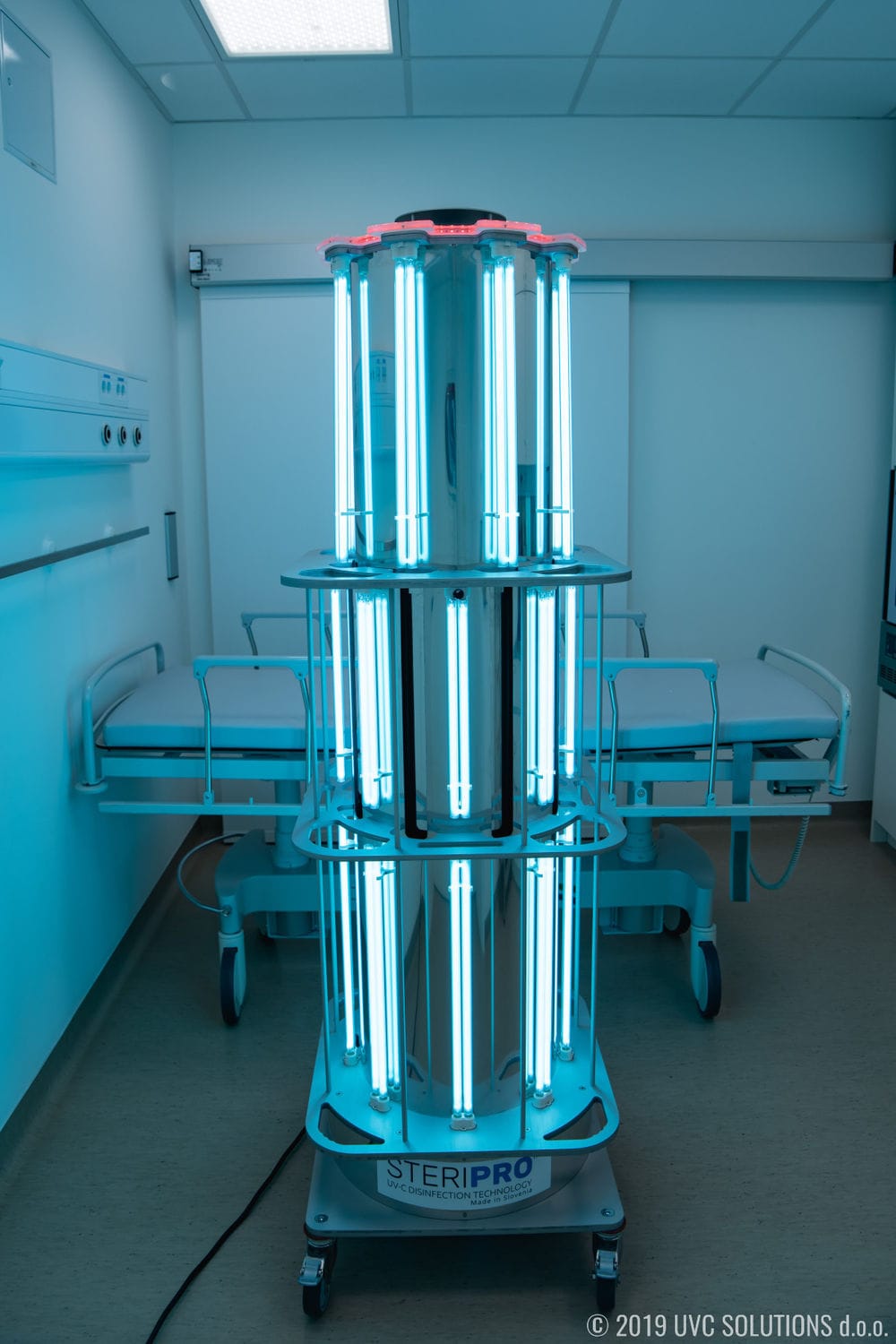
UV radiation has three wavelength zones: UV-A, UV-B, and UV-C, and it is this last region, the shortwave UV-C, that has germicidal properties for disinfection.
UVC DISINFECTION SYSTEMS INSTALL
Normally, it is advisable to install a 5 to 20 micron filter prior to a UV disinfection system. When turbidity is 5 NTU or greater and/or total suspended solids are greater than 10 ppm, pre-filtration of the water is highly recommended. Water treatment devices are dependent on the quality of the raw water. Transmitted UV light dosage is affected by water clarity. Therefore, the type of unit depends on your situation, source of water, and your water quality. NSF Standard 55 "Class B" UV systems are designed to operate at a minimum dosage and are intended to "reduce normally occurring non-pathogenic or nuisance microorganisms only." The "Class B" or similar non-rated UV systems are not intended for the disinfection of "microbiologically unsafe water." or a standard plate count of less than 500 colonies per 1 ml. These systems are intended to be installed on visually clear water.Ĭlass B - These ultraviolet water treatment systems must have an ‘intensity & saturation’ rating of at least 16,000 µW-sec/cm2 and possess designs that will allow them to provide supplemental bactericidal treatment of water already deemed ‘safe’. Systems covered by this standard are not intended for the treatment of water that has obvious contamination or intentional sources such as raw sewage, nor are systems intended to convert wastewater to drinking water. Class A point-of-entry and point-of-use systems covered by this standard are designed to inactivate (kill) or remove from contaminated water microorganisms including bacteria, viruses, Cryptosporidium oocysts, and Giardia cysts. There are two classes of disinfection systems, certified and classified by the NSF under Standard 55 – Class A and Class B Units.Ĭlass A - These ultraviolet water treatment systems must have an ‘intensity & saturation’ rating of at least 40,000 µsec/cm2. There are only a few large-scale UV water treatment plants in the United States although there are more than 2,000 such plants in Europe. In the US, it was used for drinking water disinfection in the early 1900s but was abandoned due to high operating costs, unreliable equipment, and the expanding popularity of disinfection by chlorination.īecause of safety issues associated with chlorination and improvements in UV technology, UV disinfection has experienced an increased acceptance in both municipal and household systems.

UV has been used commercially for many years in the pharmaceutical, cosmetic, beverage, and electronics industries, especially in Europe. UV disinfects water containing bacteria and viruses and can be effective against protozoans like Giardia lamblia cysts or Cryptosporidium oocysts. As a water treatment technique, UV is known to be an effective disinfectant due to its strong germicidal (inactivating) ability UV is energetic enough (ionizing radiation) that it can break chemical bonds, killing microbes. This also means that the UV spectrum has a longer wavelength than x-rays and a shorter wavelength than visible light the order of energy, from low to high, is visible light, UV, than x-rays. The UV spectrum is higher in frequency than visible light and lower in frequency compared to x-rays. Ultraviolet (UV) rays are part of the light that comes from the sun.


 0 kommentar(er)
0 kommentar(er)
